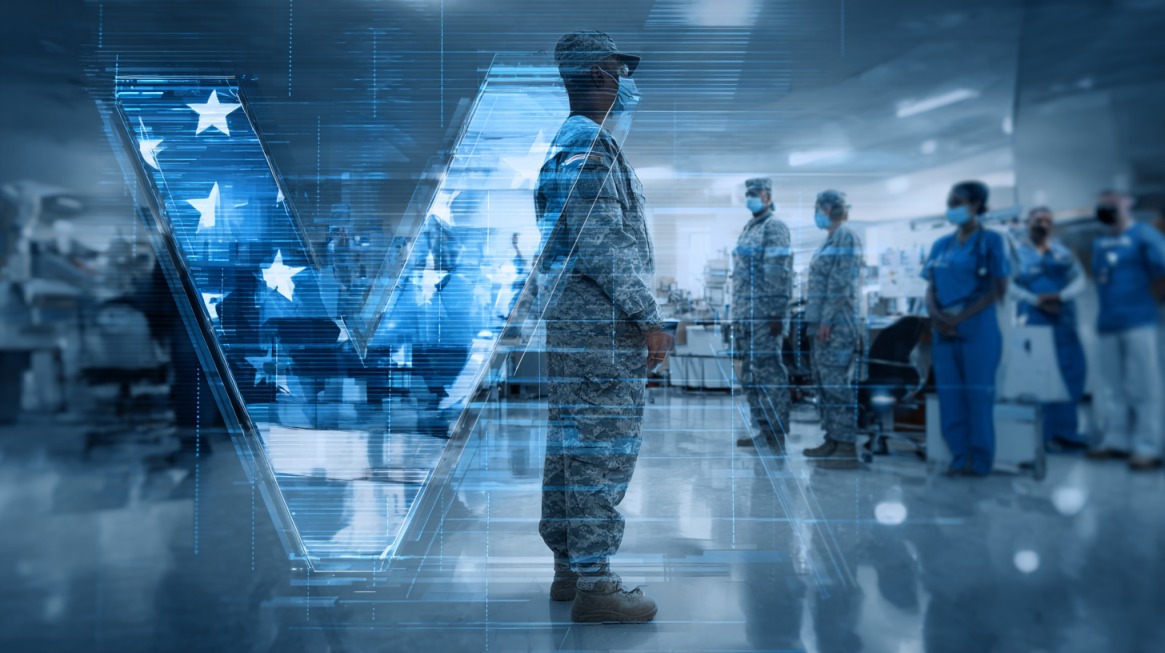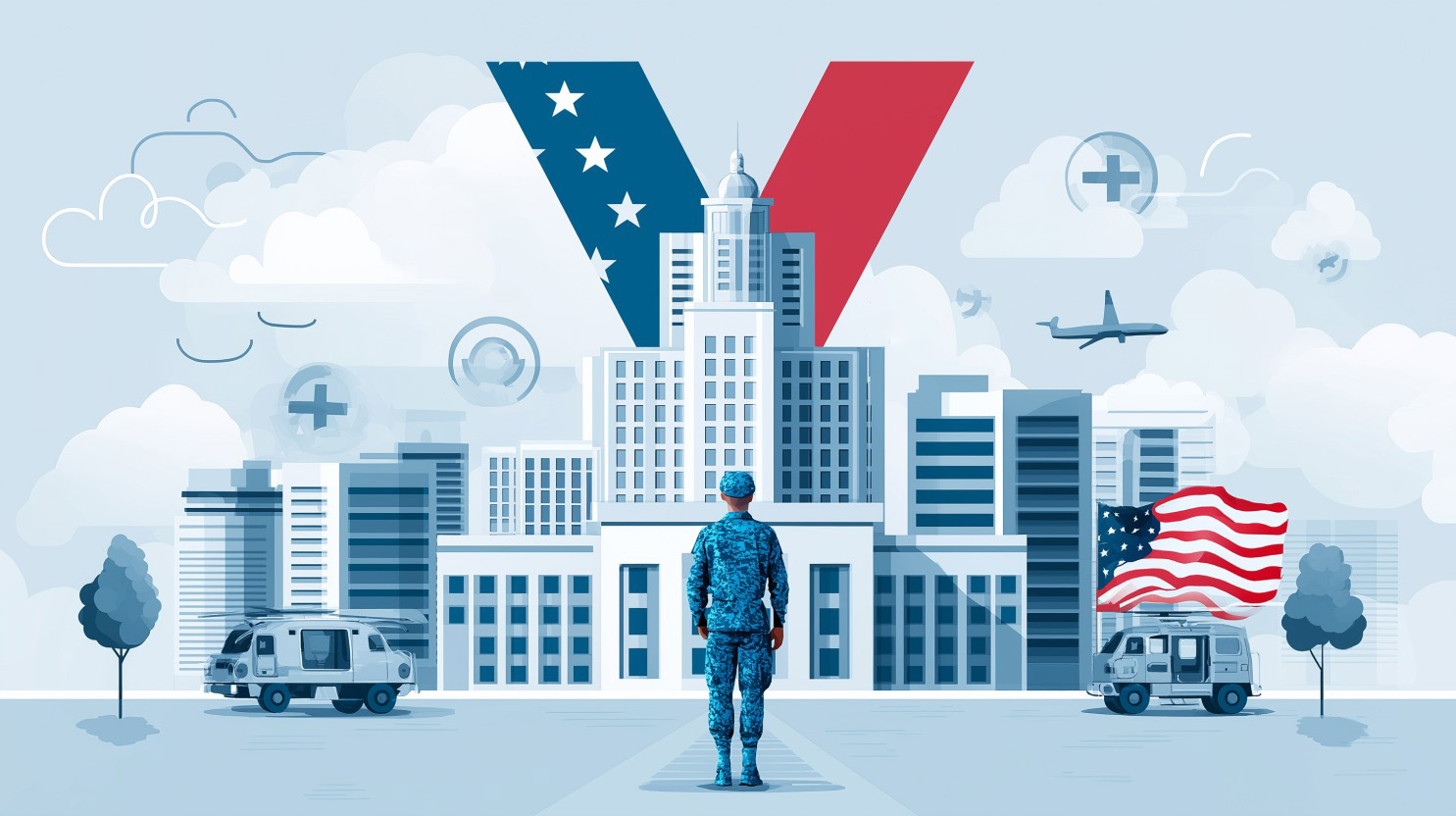Veterans in 2025 face both tremendous opportunity and looming uncertainty.
As new reforms surface and political tides shift, now is the time to take full advantage of every benefit earned through service.
The 2025 VA Federal Benefits Guide offers a comprehensive view of what’s available.
With proposals like Project 2025 suggesting restructuring and potential privatization of key services, it’s critical for veterans to stay alert and act early.
1. VA Healthcare and Mental Health Services

Veterans enrolled in VA health care can access services at over 1,200 VA facilities nationwide. These include primary care, specialized services, surgeries, prescriptions, and rehabilitation.
Mental health programs offer dedicated care for PTSD, traumatic brain injury, substance use, and suicide prevention.
VA also provides telehealth services for those unable to travel and offers 24/7 crisis support through the Veterans Crisis Line.
Why It Matters in 2025
Project 2025 has introduced fears of privatizing or defunding parts of the VA healthcare system.
Veteran health advocates, like those at VHPI, warn that outsourcing could lead to lower-quality care.
Data consistently show better outcomes when veterans receive treatment inside VA facilities compared to private sector alternatives.
Pro Tip
Whenever possible, choose VA centers instead of private providers. Physicians and counselors within the VA system specialize in military-related conditions and offer better coordination with other VA benefits.
2. Disability Compensation
Veterans with service-connected conditions can expect a modest increase in monthly payments in 2025 due to a 2.5% Cost-of-Living Adjustment (COLA).
- A veteran rated at 10% will see around $4.28 more per month
- A veteran rated at 100% without dependents will receive roughly $93.45 more
- Payments are tax-free and structured according to the severity of the disability.
Why Use It
Disability compensation provides vital financial support for injuries or illnesses that occurred or worsened during military service.
These payments often supplement income for veterans who are unable to work full-time or need ongoing medical treatment.
Even minor conditions can qualify, and ratings may be adjusted as symptoms evolve. Delaying a claim could result in the loss of retroactive pay and increased difficulty in linking health issues to military service.

Key Reminder
Don’t wait. File as soon as possible and keep documentation current.
Re-evaluate ratings regularly, especially if symptoms worsen or new diagnoses appear.
3. VA Home Loan Guaranty

- No down payment required
- No private mortgage insurance (PMI)
- Competitive interest rates
- Flexible credit requirements
- Reusable benefit throughout life
In addition, the program supports grants for home modifications for veterans with certain service-connected disabilities.
Why It’s Crucial in 2025
Housing affordability remains uncertain in 2025, and budget reforms threaten several federal financial assistance programs.
However, VA home loans continue to provide stability and access to homeownership for veterans amid volatile market conditions.
VA loans shield buyers from rising costs tied to PMI or large down payments, making homeownership accessible when traditional loans become harder to secure.
Bonus Tip
Consider using this benefit not only for buying a home but also for refinancing or remodeling.
Grants are available through the Specially Adapted Housing (SAH) and Special Housing Adaptation (SHA) programs to make homes livable for disabled veterans.
Veterans seeking expert guidance in navigating VA-backed loans can also consult trusted providers like Arnaiz Mortgage, which offers veteran-focused support throughout the homebuying or refinancing process.
4. Education Benefits (Post-9/11 GI Bill and Vocational Rehab)
Eligible veterans and their dependents have access to full tuition coverage at public colleges and universities, generous housing stipends, book allowances, and additional training resources through the Post-9/11 GI Bill.
For those with service-connected disabilities, Veteran Readiness and Employment (VR&E) provides career counseling, education benefits, resume assistance, and even self-employment planning.
These programs also support apprenticeships, on-the-job training, and non-college degree opportunities.
2025 Relevance
So far, no major federal cuts have been proposed for these education programs.
Still, employment-linked services, especially those under VR&E, could be vulnerable to administrative reduction if proposals like Project 2025 are implemented.
Veterans should act now, while systems are stable, to secure funding and access tools that boost long-term career prospects.
Action Step
Submit applications early and verify whether your state offers additional education-related incentives for veterans.
Some states provide tuition waivers or extended GI Bill usage windows for National Guard or Reservists.
5. Pension and Financial Aid Programs

VA pensions are designed for wartime veterans aged 65 or older or those permanently disabled with limited income. These benefits offer monthly payments to supplement other income sources and help cover basic living expenses.
Aid and Attendance and Housebound allowances are available for veterans needing help with daily activities or who are largely confined to their homes.
Watch Out
While eligibility rules remain unchanged in 2025, potential staffing reductions or administrative cuts, particularly under suggestions by the Department of Government Efficiency (DOGE), may delay processing or lower support availability.
Veterans relying on these payments should stay vigilant for communication lapses and application backlogs.
What to Do
Check income and asset thresholds regularly and keep documentation up to date. Those applying for Aid and Attendance should include clear proof of care needs and medical records.
Financial planners with VA-accreditation or Veteran Service Officers can help structure applications to meet requirements quickly and effectively.
6. Survivor and Dependent Benefits (DIC, CHAMPVA)

Dependency and Indemnity Compensation (DIC) is a tax-free monthly benefit paid to eligible surviving spouses, children, and sometimes parents of veterans who died in the line of duty or from service-related injuries.
CHAMPVA offers health insurance coverage to dependents of permanently disabled or deceased veterans who do not qualify for TRICARE.
2025 Updates
Survivors receiving DIC will notice a modest increase in monthly payments due to the 2.5% COLA adjustment.
CHAMPVA benefits remain structurally intact, but administrative strain tied to federal staffing cuts could cause processing delays or slower customer support response.
System slowdowns may particularly affect newly applying dependents or those updating existing benefit profiles.
Important
Families should not assume benefits apply automatically.
Registration with the VA is required, and missing documents often cause long delays.
Keep a record of all communication and verify benefit use regularly.
7. Employment and Economic Opportunities

Veteran preference still holds weight in federal hiring. This offers an advantage during the job application process by placing veterans higher on hiring lists when qualifications are similar.
Programs like VET TEC (Veteran Employment Through Technology Education Courses) continue to gain traction, providing short-term training in fields like coding, cybersecurity, and cloud services, all funded by the VA.
Many states and local governments also offer targeted employment programs that cater to veteran job-seekers.
Risks Ahead
Project 2025 includes proposals to significantly shrink the federal workforce, putting thousands of veteran-held positions at risk.
This could limit options for those relying on preference points or seeking jobs in departments historically known for hiring veterans.
What to Do
Apply now if interested in federal roles. Use VA employment resources, including résumé assistance, mock interviews, and job search portals.
Expand the search to include veteran-friendly private-sector employers and non-federal public programs.
Don’t overlook resources such as the Department of Labor’s Veterans’ Employment and Training Service (VETS) and nonprofits that help match military skills to civilian careers.
Summary
Veterans have access to an expansive set of tools in 2025, but those resources are not guaranteed to remain untouched.
Political shifts, administrative overhauls, and staffing constraints could create disruptions, especially for those who delay taking action.
Use the 2025 VA Federal Benefits Guide, available online and at VA centers, to stay up to date.







